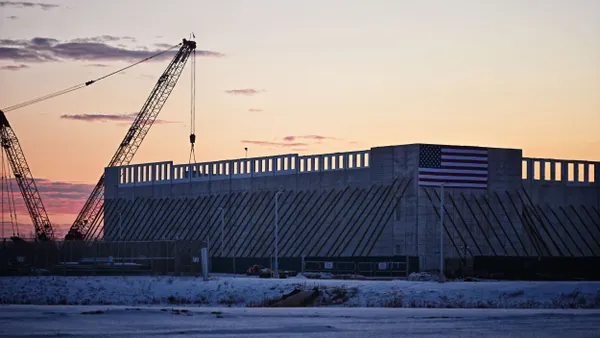Dive Brief:
-
New York's six major investor-owned (IOU) utilities received approval from the Public Service Commission (PSC) last week for tariff changes that will take effect Feb. 1 and accommodate battery systems across the state.
-
Under the updated tariffs, if wholesale revenues for storage assets exceed contractual operating costs, 70% of the difference will be shared with customers, who will receive the funds once a year.
- So far, the changes will apply to relatively few battery systems — the state has only 6% of their targeted 2025 battery storage goals deployed on the grid. But yet-to-be-operational facilities are under contract, and come 2025, the tariff system is supposed to apply to batteries with the cumulative storage potential to serve the "equivalent electricity demand of one-fifth of all New York homes," the PSC said in a press release.
Dive Insight:
The companies building batteries in New York and eventually running the day-to-day operations of the storage systems won't necessarily be Con Edison, National Grid, or any of the other utilities in the state. Instead, other companies will carry out the construction and operations of different facilities.
In fact, that's the exact arrangement between 174 Power Global and Con Edison. The former company signed a contract in December to build and operate a 100 MW battery storage project in Queens. Once operational in 2023, the battery will be under a seven-year dispatch rights agreement with Con Edison.
The newly-approved tariff revisions for utility companies in New York addresses the deal between Con Edison and 174 Power Global, and similar deals between utility companies and their battery contractors.
Some industry stakeholders also expressed support for the PSC's move directing utilities to contract out battery services, rather than run entire facilities themselves.
"The most important aspect of the state's direction to the IOUs is that investment in energy storage resources is best made by independent developers and not by the IOUs themselves," said Gavin Donohue, president and CEO of Independent Power Producers of New York, a trade association for power producers in the state, via email. "The requirement that the utilities contract with third parties through competitive RFPs ensures that storage will be located where it is needed most and at least cost to ratepayers."
In 2018, the PSC issued an energy storage order that set a goal of having 3,000 MW of energy storage functioning by 2030 and included details about how that goal would be funded. The utility companies could charge customers the cost of the contracts necessary to build and maintain battery systems. "To provide an incentive for the companies to maximize the wholesale revenues of the storage asset," as the order states, yearly revenue that surpasses contract costs will be split with customers, who will get 70% of the money, with shareholders getting the rest.
While its unclear how often there will be excess profit to split, Con Edison spokesperson Allan Drury said it is the company's "intention to maximize revenues from the battery to the greatest benefit of customers."













